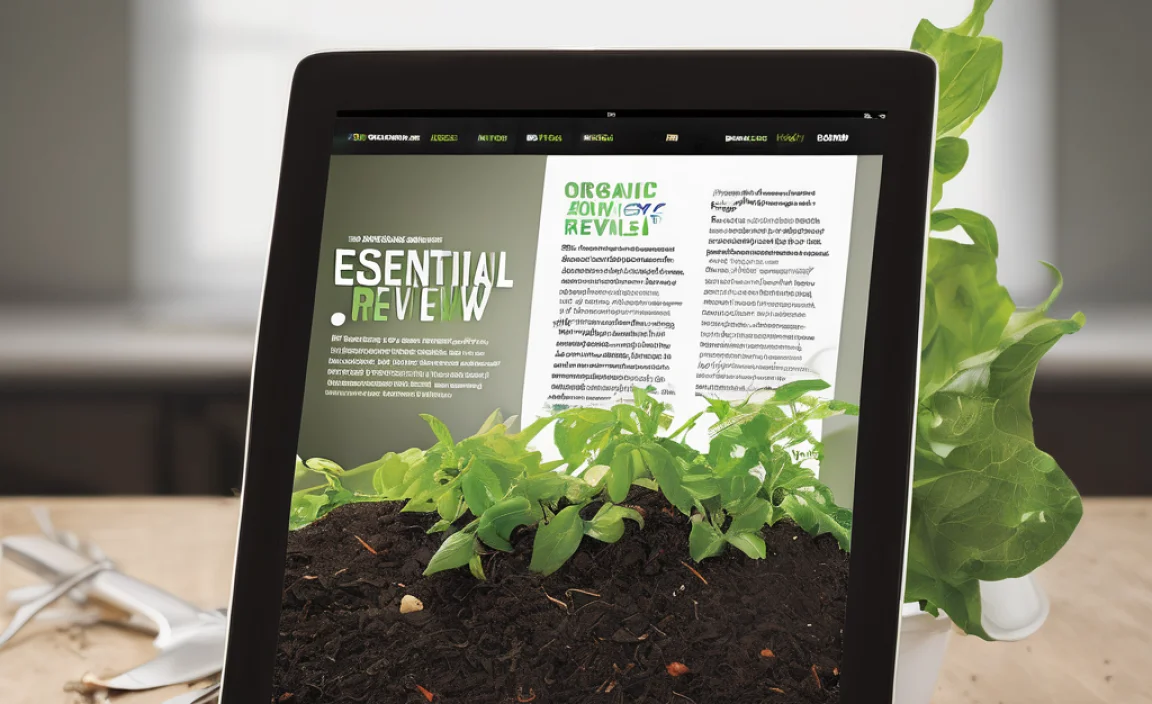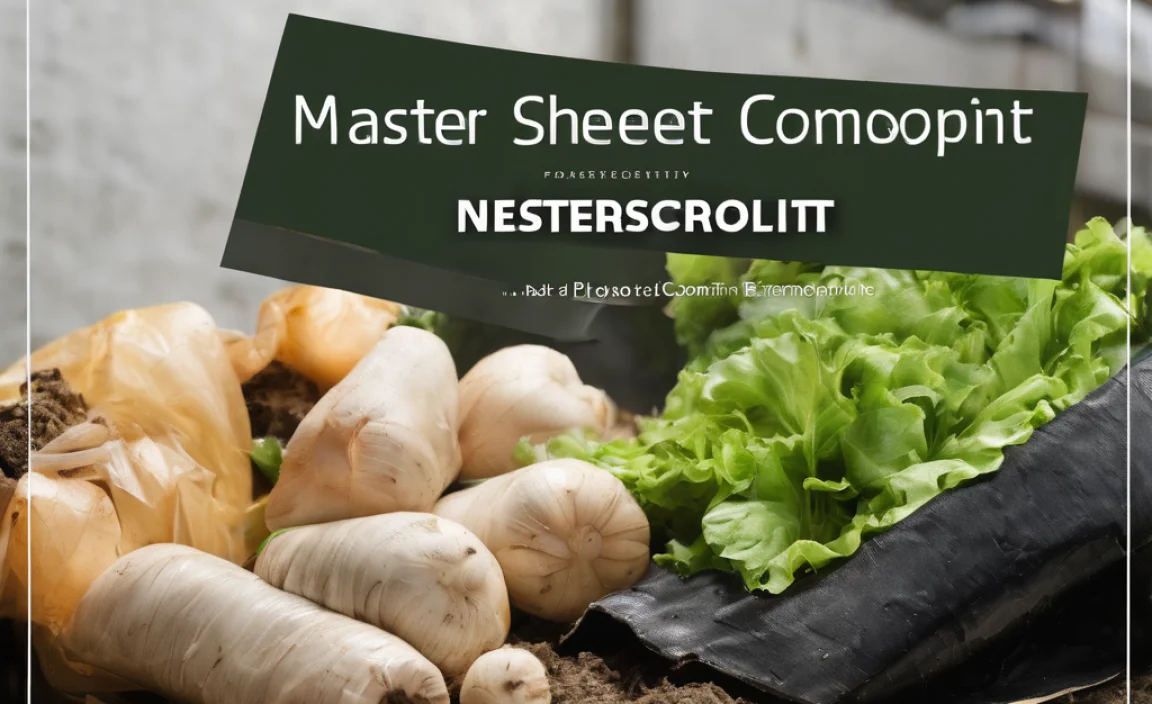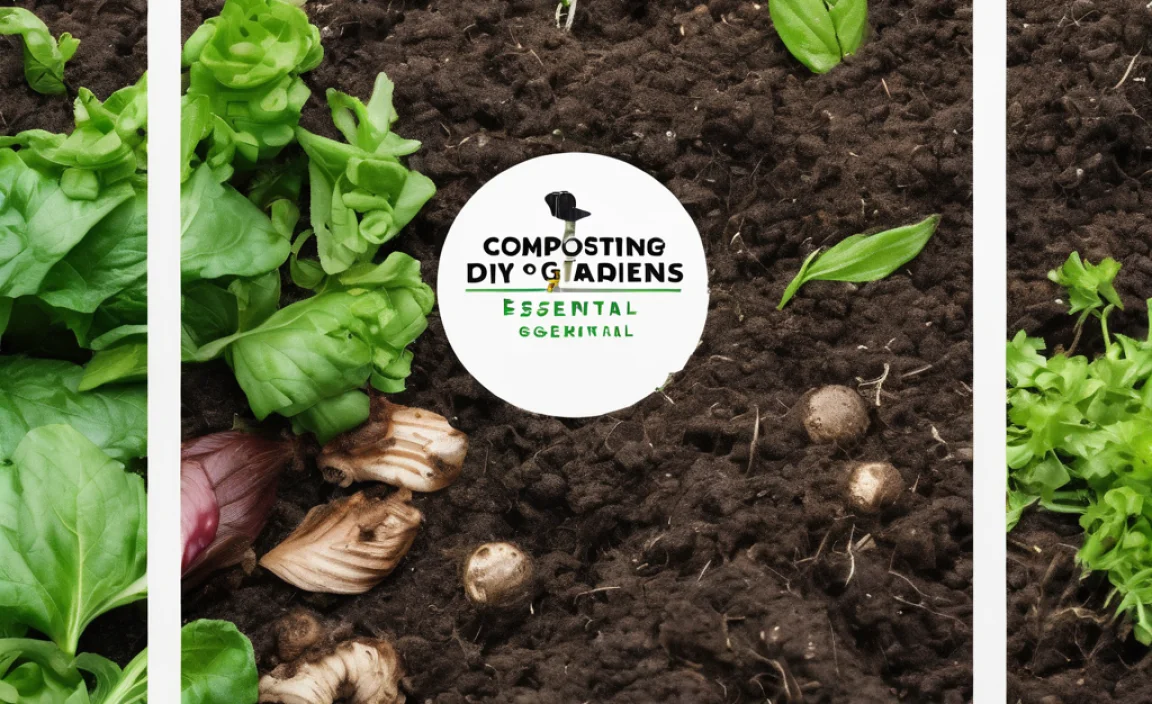Do you know where banana peels and apple cores go? They can turn into soil! This magical process is called composting. One type of composting is aerobic composting. Let’s explore the aerobic composting step by step. You’ll discover how air-loving bacteria transform waste into precious soil. Ready to turn trash into treasure?
Key Takeaways
- Aerobic composting turns waste into nutrient-rich soil.
- Microbes need air to break down organic matter.
- Understand aerobic composting step by step for the best results.
- A well-maintained compost pile means less waste in landfills.
- Compost improves garden soil health naturally.
Understanding Aerobic Composting Basics
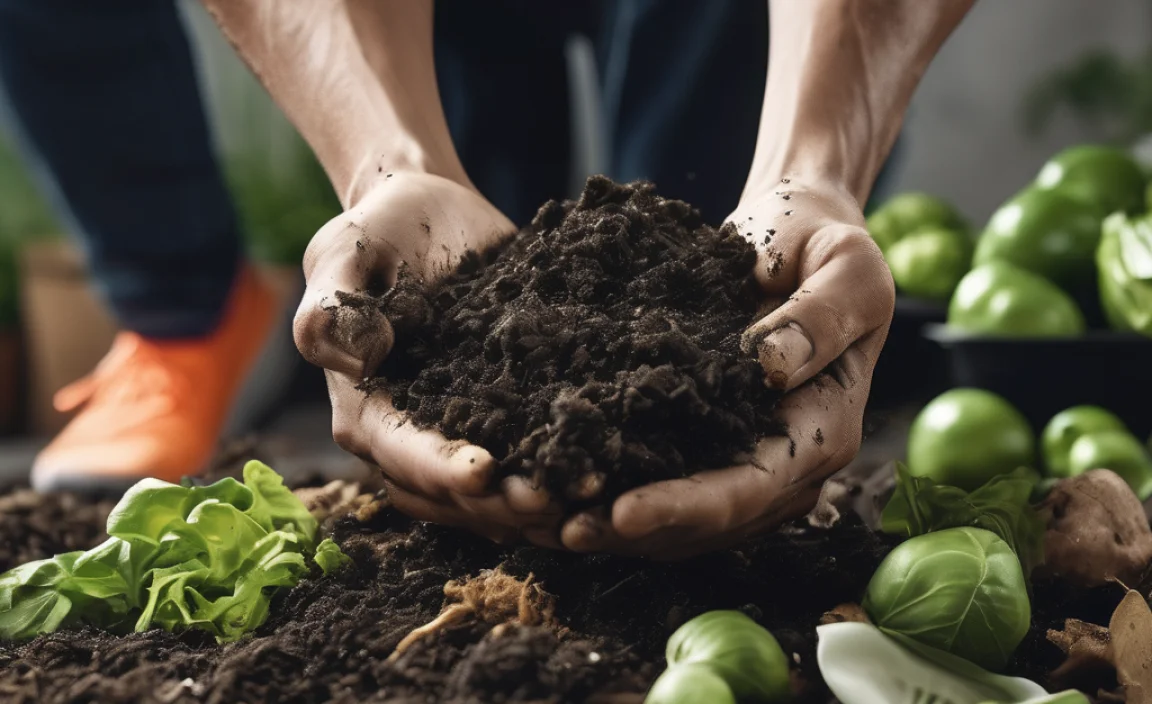
Aerobic composting is a way to recycle organic waste. It turns kitchen scraps into fertile soil. Air-loving microbes work hard to break down materials. They need oxygen to do their job well. If you follow the aerobic composting step by step, you’ll help these microbes. You provide them with the right environment to thrive. Start by finding a good spot for your compost pile. Choose a shady area with good drainage. This keeps your compost pile healthy and active.
- Choose a shady spot for your compost.
- Ensure the area has good drainage.
- Keep the pile moist but not soggy.
- Turn the pile regularly for air circulation.
- Add a mix of green and brown materials.
Once you’ve set up your compost pile, it’s time to add materials. Use a mix of green and brown items. Greens are things like vegetable scraps and grass clippings. Browns are twigs, dry leaves, and paper. Turning the pile helps air reach the microbes. This speeds up the decomposition process. Keep it moist, like a wrung-out sponge. Moisture helps microbes break down the materials.
Fun Fact or Stats : Did you know that one-third of the world’s food is wasted? Composting can help reduce this waste!
Why Use Aerobic Composting?
Have you ever wondered why some gardens thrive? It’s often because of healthy soil. Aerobic composting creates this rich soil naturally. It uses kitchen scraps and yard waste. The microbes do the work, breaking down the materials. They turn waste into something valuable. It’s like having tiny gardeners in your compost pile! By composting, you help the environment and your garden. Less waste goes to landfills, and you get free soil. What could be better?
Where to Start Your Compost Pile?
Choosing the right spot for your compost pile is important. Look for a shady area in your yard. This keeps the pile from drying out too fast. Make sure the spot has good drainage. You don’t want your pile sitting in water. A dry pile won’t break down as well. Have you ever tried to build a sandcastle with dry sand? It doesn’t work well, does it? Your compost pile works the same way. It needs the right conditions to succeed.
How Does Aerobic Composting Work?
What makes aerobic composting different? It’s all about the air! Microbes that need oxygen break down the materials. They eat the scraps and turn them into soil. This process creates heat, which helps speed up decomposition. By turning your pile, you give it more air. Think of it like flipping pancakes to cook both sides. A well-aerated pile breaks down faster and smells fresh, not rotten. It’s amazing what a little air can do!
Gathering Compost Materials
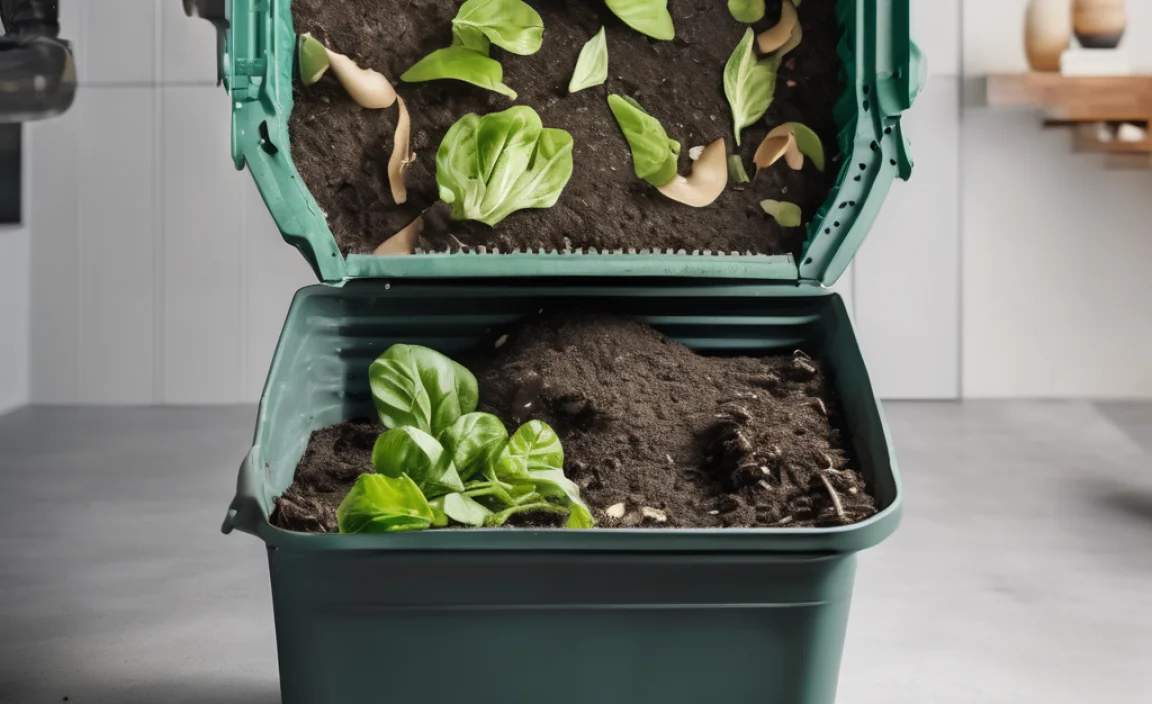
Now that your compost area is ready, it’s time to gather materials. Collect kitchen scraps like fruit peels and vegetable cuttings. Add grass clippings, garden waste, and small twigs. The right mix of brown and green materials is vital. Browns provide carbon, and greens provide nitrogen. Have you heard of the perfect recipe? That’s what compost needs—just the right mix! Follow the aerobic composting step by step for success.
- Collect fruit and vegetable scraps.
- Add small twigs and dry leaves.
- Include grass clippings and garden waste.
- Mix greens and browns evenly.
- Avoid adding meat and dairy products.
Mixing green and brown materials ensures proper balance. This balance keeps the microbes happy. They need carbon from browns and nitrogen from greens. Avoid adding meat or dairy. These attract pests and can smell bad. Stick to plant-based scraps for the best results. Keep a container in your kitchen for easy scrap collection. It’s a convenient way to gather materials for your compost.
Fun Fact or Stats : The average American throws away 4.4 pounds of trash daily. Composting can reduce this waste significantly!
What Materials to Add?
Not sure what to add to your compost pile? Focus on plant-based materials. These break down easily and don’t attract pests. Great options include fruit and vegetable scraps, coffee grounds, and eggshells. Avoid items like meat, dairy, and oils. They take longer to decompose and may smell bad. Think of your compost as a big salad. It needs the right ingredients to be healthy.
Why Are Balance and Mixing Important?
Have you ever tried to bake a cake without mixing? It doesn’t turn out well. Your compost pile is the same. Mixing materials ensures even decomposition. Balance between green and brown is crucial. Greens provide nitrogen, while browns add carbon. This mix keeps the microbes working efficiently. A well-mixed pile is like a well-mixed cake batter. It’s ready to rise and shine!
Avoiding Common Compost Mistakes
Did you know some items don’t belong in your compost pile? Meat, dairy, and oily foods are no-no’s. They attract pests and cause odors. Stick to plant-based scraps for best results. Another mistake is not turning the pile. Without air, the pile won’t decompose well. Remember to turn your pile regularly. It’s like stirring a pot of soup. It helps everything mix and cook evenly.
Building Your Compost Pile
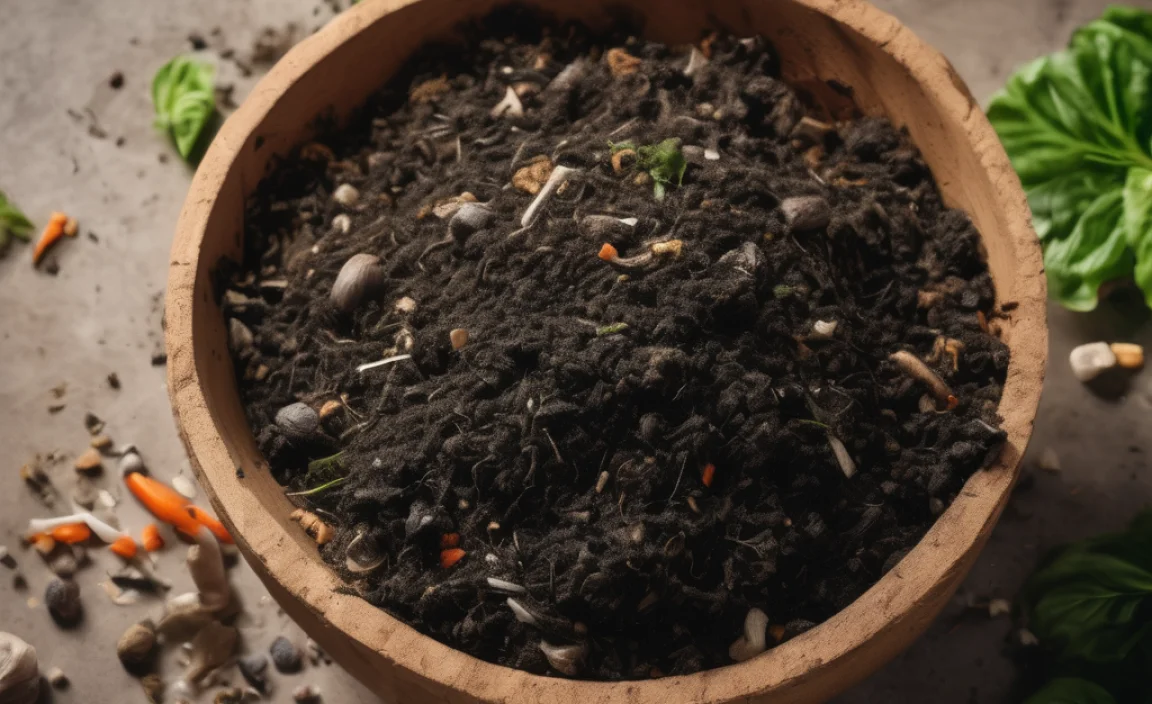
Ready to build your compost pile? Start with a layer of brown materials. Add a layer of green materials on top. Keep adding layers, like a compost cake. Each layer should be about 3 inches thick. This keeps the pile balanced. The layers help air move through the pile. This is important for the aerobic process. Think of it like making a sandwich. You need all the parts to make it tasty!
- Start with a layer of browns.
- Add a layer of greens on top.
- Keep layers about 3 inches thick.
- Alternate layers for balance.
- Moisten the pile if it’s dry.
Building your compost pile like a layer cake helps it break down. The layers allow air to circulate. This lets microbes breathe and work. If the pile seems dry, add a bit of water. It should feel like a damp sponge. Too much water can drown the microbes. Too little makes them thirsty. Keep your compost pile happy and healthy!
Fun Fact or Stats : Compost piles can get as hot as 150°F. That’s as warm as a summer day!
How to Layer Materials?
Think of layering your compost pile like making a lasagna. Start with a layer of browns, like twigs and dry leaves. Next, add a layer of greens, such as fruit peels. Keep building up the layers, alternating browns and greens. This method helps air flow through the pile. It keeps your compost healthy and odor-free. Just like a tasty lasagna, layers make all the difference!
Why Is Moisture Important?
Have you ever tried to swim in a dry pool? It’s not fun! Moisture is vital for composting. It keeps the microbes active and healthy. Your compost pile should feel like a damp sponge. Too much moisture can drown the microbes. Too little makes them slow down. Finding the right moisture balance helps your compost thrive. Imagine giving your compost a refreshing drink on a hot day.
How to Speed Up Decomposition?
Want your compost pile to work faster? There are some tricks you can use. First, make sure to turn your pile regularly. This gives the microbes air. You can also chop materials into smaller pieces. Smaller pieces break down quicker. Keep the pile moist and balanced. These steps help speed up the process. It’s like giving your pile a little boost of energy!
Maintaining Your Compost Pile
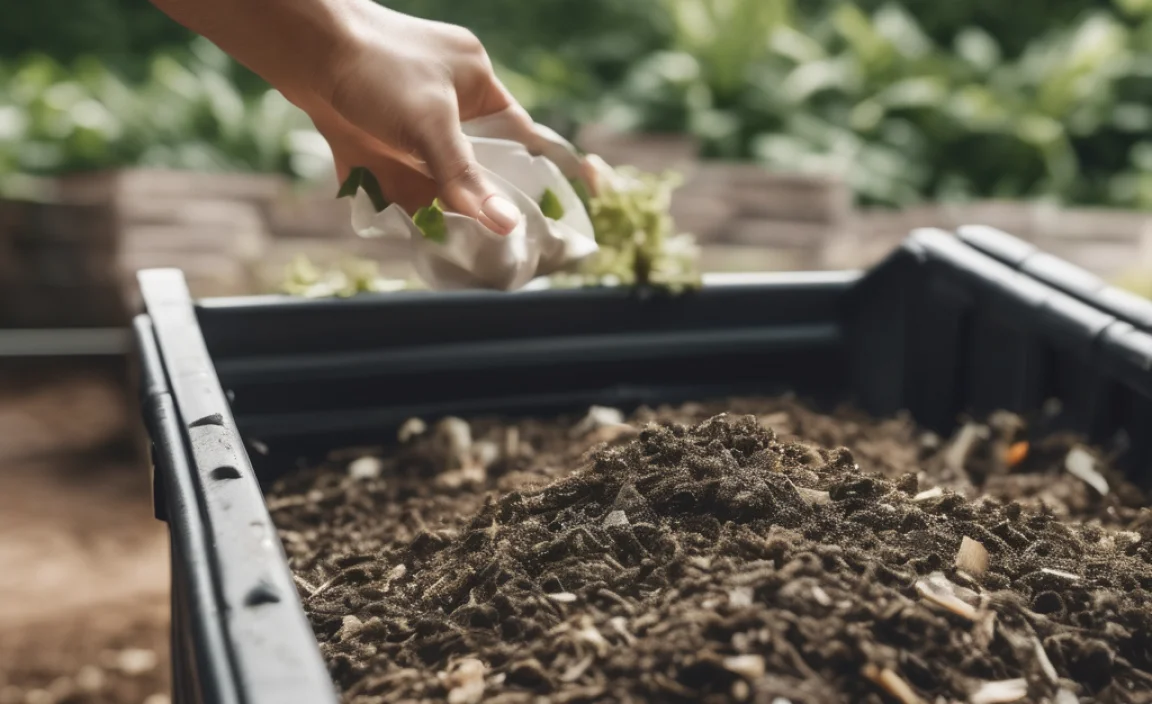
Maintaining your compost pile is important for success. Turn the pile weekly to give it air. Check moisture levels regularly. It should feel damp, like a wrung-out sponge. If it’s too wet, add more brown materials. If it’s too dry, sprinkle some water. Keep adding materials as you collect them. Balance helps the pile stay healthy. Think of it like taking care of a pet. Your compost needs attention to thrive!
- Turn the pile weekly for air.
- Check moisture levels often.
- Add more browns if too wet.
- Sprinkle water if too dry.
- Keep adding new materials.
Regular maintenance keeps your compost pile healthy. Turning the pile adds oxygen, helping decomposition. Moisture checks ensure the pile isn’t too dry or too wet. Be consistent with adding new materials. This keeps the microbes busy and the process active. Maintaining your compost pile is like watering a plant. It needs regular care to grow strong.
Fun Fact or Stats : Healthy compost piles can reduce greenhouse gas emissions! This helps fight climate change.
Why Turn the Compost Pile?
Turning your compost pile is like fluffing a pillow. It adds air and makes it more comfortable for microbes. These hard-working creatures need oxygen to break down materials. Without enough air, the pile may smell bad. Regular turning keeps it fresh and active. Think of it as giving your compost a breath of fresh air!
How to Check Moisture Levels?
Want to know if your compost pile is thirsty? Use the squeeze test! Grab a handful of compost and squeeze it. It should feel like a damp sponge. If water drips out, it’s too wet. Add more brown materials to balance it. If it crumbles apart, it’s too dry. Sprinkle some water to moisten it. The squeeze test is an easy way to check moisture levels.
Adding New Materials
Have you ever heard the saying, “Out with the old, in with the new”? It applies to composting, too. As your compost pile breaks down, add new materials. Kitchen scraps and yard waste are great additions. Keep a container in your kitchen for easy collecting. Adding new materials keeps the process going. It’s like feeding your compost pile a healthy diet!
Harvesting Your Compost
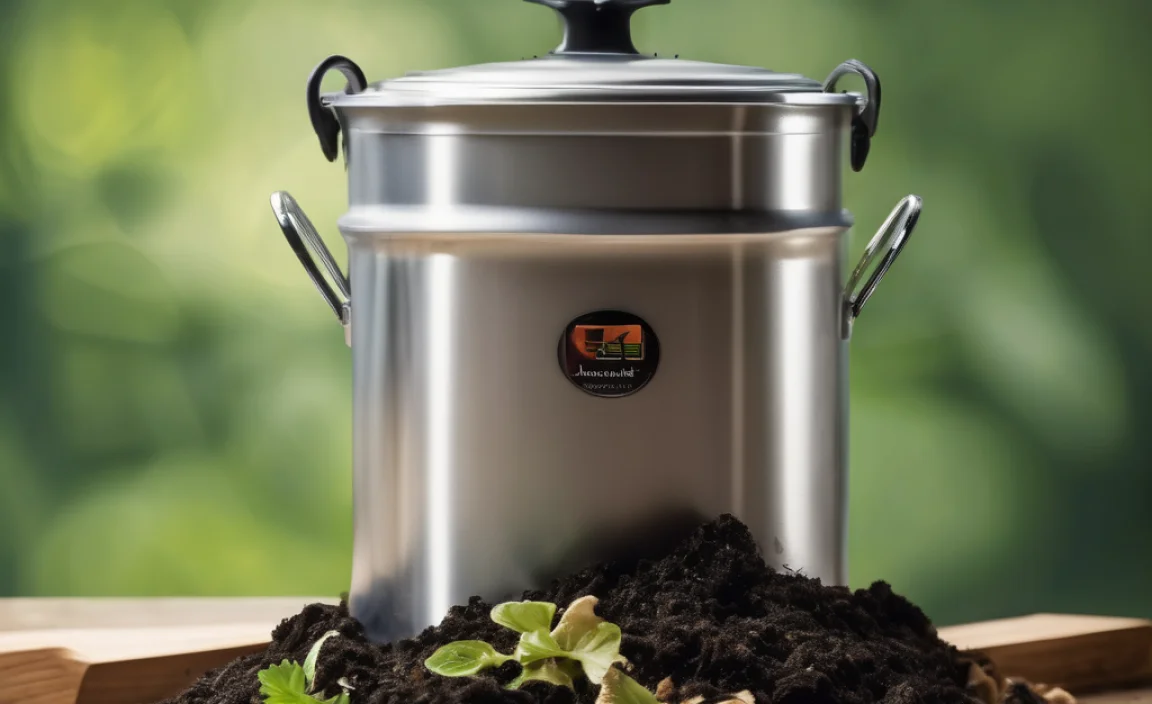
After months of hard work, it’s time to harvest your compost. Finished compost looks like dark, crumbly soil. It has a fresh, earthy smell. Use a garden fork to gather it. Spread it in your garden to improve soil health. Compost adds nutrients and helps plants grow. It’s like giving your garden a vitamin boost. Why buy soil when you can make your own?
- Wait for compost to turn dark and crumbly.
- Check for a fresh, earthy smell.
- Use a garden fork to harvest.
- Spread compost in your garden.
- Give your plants a natural boost.
Harvesting compost is a rewarding step in the process. You’ve turned waste into valuable soil. Use it to enrich your garden beds and potted plants. Compost improves soil structure and provides nutrients. Your plants will thrive with this natural fertilizer. It’s like turning your kitchen scraps into garden gold!
Fun Fact or Stats : Compost can hold up to 20 times its weight in water. This helps reduce the need for watering your garden!
When Is Compost Ready?
Is your compost pile ready to harvest? Look for signs like dark, crumbly soil. It should smell fresh, like a forest after rain. If there are still large pieces, it may need more time. Finished compost is ready to nourish your garden. Have you ever baked a cake and couldn’t wait to eat it? Harvesting compost is just as exciting!
Using Compost in the Garden
Ready to give your garden a boost? Spread compost around your plants. It adds nutrients and improves soil texture. Mix it into garden beds and pots. Compost acts like a natural fertilizer. Have you ever added sugar to your lemonade for extra sweetness? Compost is like that extra sweetness for your garden!
Storing Leftover Compost
Have leftover compost? Store it for later use. Keep it in a covered bin to protect from rain. This keeps it dry and ready for when you need it. You can also spread it as mulch. This helps keep weeds down and retain soil moisture. Storing compost is like saving leftovers from dinner. It’s great to have ready when needed!
Conclusion
Now you know how to compost with the aerobic composting step by step. By following these steps, you turn waste into valuable soil. Composting helps reduce trash and improves your garden. It’s an easy and rewarding way to help the environment. Ready to start your composting journey? Your garden will thank you!
FAQs
Question: What is aerobic composting?
Answer: Aerobic composting is a process that uses air-loving microbes. These microbes break down organic waste into soil. This type of composting requires oxygen for the microbes to work effectively. It’s a natural way to recycle kitchen scraps and yard waste.
Question: Why is air important in composting?
Answer: Air is vital because it helps microbes break down materials. These microbes need oxygen to survive and work efficiently. Without enough air, the compost pile can smell bad. Regularly turning the pile helps keep it fresh and active.
Question: What materials can I compost?
Answer: You can compost fruit and vegetable scraps, coffee grounds, and eggshells. Yard waste like grass clippings and dry leaves is also good. Avoid adding meat, dairy, or oily foods, as they attract pests. Stick to plant-based scraps for the best results.
Question: How do I know when my compost is ready?
Answer: Compost is ready when it’s dark and crumbly. It should have a fresh, earthy smell. If large pieces remain, give it more time to break down. Finished compost is a great addition to your garden.
Question: Is composting good for the environment?
Answer: Yes, composting is beneficial. It reduces waste in landfills and lowers greenhouse gas emissions. Composting also enriches soil, helping plants grow better. It’s a simple way to support a healthier planet.
Question: Can kids help with composting?
Answer: Absolutely! Kids can help collect kitchen scraps and yard waste. They can learn by following the aerobic composting step by step. It’s a fun way to teach them about recycling and nature. Composting can be a rewarding family project.

